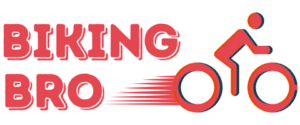The average pump is pretty easy to use no matter how inexperienced you are, right? Well, not quite and if you’re reading this then you’re probably looking for answers on how to use a bike pump.
Truth is, this whole process can be quite confusing for a beginner.
If you feel annoyed after trying to use your pump, you’re not alone. However, this is an important skill for any biker because you never know when you’ll have flat or deflated tires.
Make sure you know what to do when that time comes so you can quickly fix your bike and get back on the road.
How to Pump Air in Bike Tire

But how to use a bicycle pump and how does a bike pump work? Now that you know what each type has to offer, it’s time to proceed with a step-by-step process on how to use a bike pump on a cruiser bike like a pro.
1. Check Your Tire Valves
Figure out which pump you need by checking your tire valves. There are two main tire valves to choose from, including the lithe and tall Presta valve that features a small nut located at the top.
Then you have the black Schrader valve which looks just like your car tire valve so you need to learn how to use a bike pump schrader valve.
2. Get the Proper Pump
Don’t make the mistake of using the wrong pump because, in the end, you will pay for it. For best results, try to select a pump head that coincides with your particular valve. Keep in mind that each valve requires a unique pump head.
Certain models come with an adjustable pump which means you get a two-in-one deal. However, other models are specifically designed to work with certain kinds of valves.
If you’re not sure which pump to use, simply attach the one you have and proceed to inflate the tire. You’ll know it’s the wrong pump when this doesn’t work.
3. Remove the Valve Cap
It’s quite an easy process to remove the valve cap. Presta valves require you to do a counterclockwise rotation of the nut. Once it’s off, place the cap somewhere safe so you know where to find it when you need it again.
4. Attach the Pump to the Valve
This is one of the easiest steps in the process of how to use a bike pump, but this doesn’t mean you should drop the ball. Once you’ve removed the cap and made sure the core is loose, you’ll need to check if the nozzle is firmly attached to the valve.
If you see that the tire pressure is not changing when you start pumping it, then you should re-attach the pump head to ensure that it’s securely in place.
5. Push the Handle
When you’re sure the head has been attached properly, grab your pump handle and do a push and pull motion to inflate your tires. But what happens when bike pump won’t push down? Continue reading please!
6. Continue Until You Have the Right Pressure
Look at the tire gauge to check for the air left in your tire. Look at the tire wall to find out how much tire pressure it’s designed to handle and use that as a guide when you start pumping.
However, if you have a gauge then you can easily determine whether or not it has enough pressure by simply touching it.
Different Types of Bike Pumps
The following section is all about highlighting the different bike pumps available because you never know which one you’ll end up.
These are the most commonly used types and it’s instrumental to know them before you proceed to the rest of this ‘how to use a bike pump’ guide.
Hand Pump
Portable hand pumps are perfect for emergency purposes and they’re so small and lightweight that they won’t take up much space when you’re traveling.
But, their small size means that they offer less air pressure but they’re the perfect alternative when you need a quick fix and you have a flat on the side of the road.
How to use a hand bike pump? Keep in mind that when using this type, you’re bound to exert pressure on the valve of your bike which is why most of them come with a hose that’s designed to reduce strain on the valve and minimize air leakage.
With that said, the actual process of using a hand bike can be quite tedious and annoying because it offers less airflow overall and you really need to put your back into it to get the results you want.
Frame Pump
With its lithe and portable frame, this pump fits nicely on your bike tube and it works perfectly to inflate even the most busted tires.
Another benefit of using this pump is the fact that it only takes a few strokes to get high-pressure air.
Stand Pump
This type of pump is incredibly versatile because it can be used on different types of vehicles.
However, it doesn’t work well for high air pressure tires and mostly works for low air pressure tires instead.
Floor Pump
Bicycle floor pumps are your normal pump that probably everyone has in their garage. It’s popular because it provides you with lots of air pressure right off the bat and yet it’s portable at the same time.
It’s perfect for those off-the-cuff pumps on the road and can inflate even the most deflated bike tires.
CO2 Inflators
This type of pump is filled with useful carbon dioxide to provide all the airflow you need. This pump also works efficiently to inflate several tires at once.
How to Remove Tire Pump Without Losing Air
As soon as your tires are properly inflated, go to the top of the pump and flip the switch. Afterward, tighten the locking nut and make sure the valve is properly covered during this process to prevent air loss.
Keep in mind that your tires will inevitably lose some air after you’ve removed the pump. This happens and it’s no cause for alarm.
How Often Should You Pump Up Your Bicycle Tires
It’s natural for tires to lose pressure over time, especially if you use them regularly. That’s why it’s important to check them frequently and make sure they’re always topped up to help you enjoy a smooth ride.
As a rule, you should check your tires at least once a week. However, if you’re someone that uses their bike more frequently then you should check them even more frequently than that. If you drive less often then you won’t have to check them often at all.
What PSI Should My Bike Tires Be At?
At this point, you know your way around a bike pump and can wield it like a master. But, it’s important to understand the pressure you should pump to. This number is limitless when using a floor pump because it’s a versatile tool.
Other pumps, on the other hand, might give you a hard time when helping you get to your original riding pressure.
Road tires require lots of air so you should go to the max but without pinch flatting. If you don’t have a gauge then you should check how hard the tires are using your thumb as you go along.
Road tires are easy and only need a gentle press. Hybrid and cyclocross tires, on the other hand, need a firmer touch of about two to three millimeters. Mountain bike tires are pretty hard and can handle a harder press.
Bike Tire Valve Won’t Take Air?
It’s not uncommon for a bike tire to struggle with air intake during the pumping process. Luckily, you can do something about this.
Make sure the air pump nozzle is secured nice and tight. There shouldn’t be any air leakage and it should stand up straight. A wobbly nozzle allows you to pump air but without actually inflating the tire.
A secure nozzle is important because it means that the pump won’t go down at any point. To fix this, simply separate the valve from the nozzle. Long press a few times and make sure it doesn’t get stuck as this will make it difficult for the tire to actually intake air.
After this, you’ll be able to reattach the nozzle and fill the tire with air.
Conclusion
Well, there you have it! That’s how to use a bike pump! You’ll never be stuck on the side of the road because of a flat again.
We’ve given you all the tips you need, from the types of valves available to the actual process and what actions to avoid to make sure the tire actually takes in the air and reaches the right pressure.
Now you’re ready to hit the open road, worry-free!
